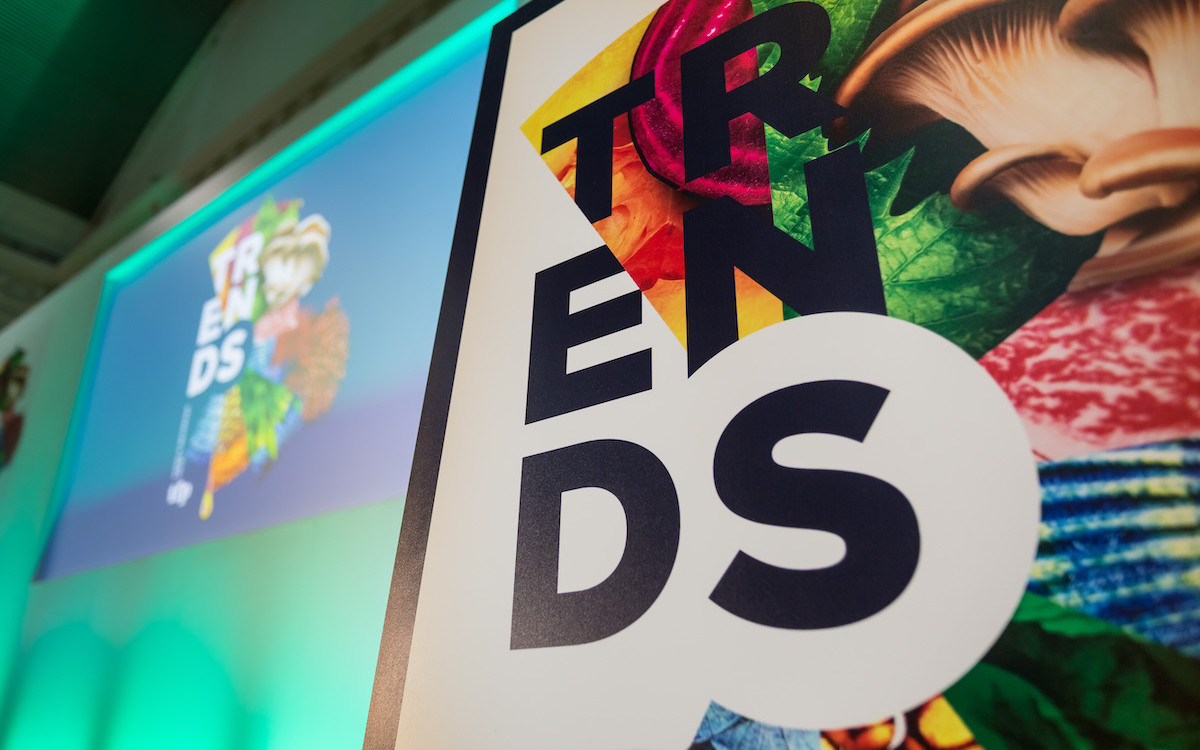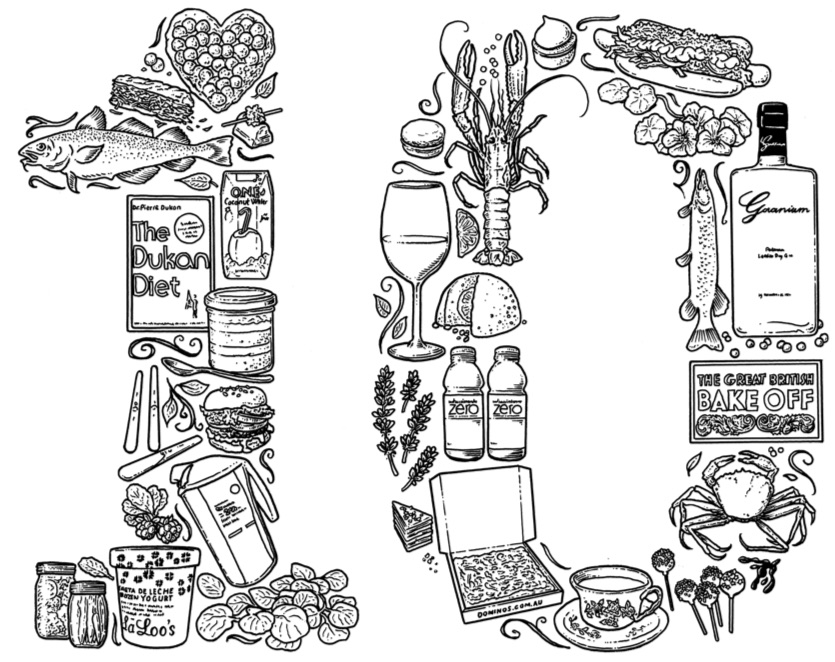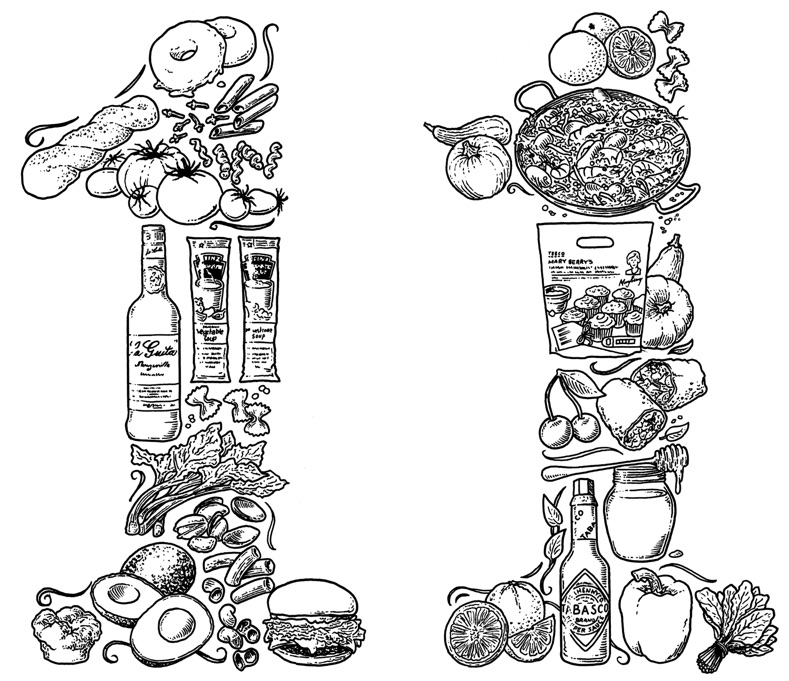
We started the decade with street food and salted caramel gaining momentum, we showed respect to animals by eating it all and we were fresh off the back of the global financial crisis.
By the end of the decade we showed respect to animals by not touching them at all with the momentous meat reduction movement of veganism, and we were on the cusp of the reality of lab grown meat, fish and dairy.
What happened in the intervening 10 years? thefoodpeople have been spotting and reporting on trends in food and drink for 15 years, so as we tip into a new decade, we delved into our trend archives to bring you an overview of the last 10 years.
The groundwork for the second decade of the millennium was laid in the first. YouTube launching in 2005, Twitter in 2006 and the iPhone, Google Street View and Amazon Kindle all in 2007 creating a world of constant connectivity and the beginning of digital convenience. Ferran Adria was the most influential global chef, having brought molecular gastronomy into the kitchen, and salted caramel was at the start of its ever popular life. Fine dining was to tip over into casualisation and it was the beginning of street food, due to the global financial crisis in 2008, which was having a big effect on food and drink as the new decade started.
20 
The start of the decade saw everyday staples getting a makeover with recession-friendly comfort foods such as hot dogs, burgers and pies topping shopping lists. The launch of Great British Bake off was the perfect tonic to times of austerity, debuting in August 2010, capturing the hearts of the nation & fuelling a home-baking extravaganza.
Whilst you would be forgiven for thinking it was all about calorie-laden cakes and pies, this year also saw a focus on health and wellness with coconut water being the hyped-up 'cure all ails' celebrity obsession and sugar beginning to be cut down in drinks with the help of Truvia, and Eataly in New York offering a vegetable butcher.
When it came to technology, smartphones began to offer food & drink businesses a whole new revenue stream. GrubHub (Chicago) first allowed users to order food through their mobile phones with orders reaching £7m, whilst Wagamama became the first UK restaurant to have their own app. This was also the year that Instagram launched, changing our relationship with food and drink forever.
Away from the everyday, René Redzepi's noma took the San Pellegrino Best Restaurant for the first time, marking a switch in culinary philosophy from Ferran Adrià's molecular dining to new Nordic's local, foraging, salt-of-the-earth approach. As a nod to this greener, ethical and more sustainable attitude, floral trends gathered more pace, as both sweet and savoury dishes started used edible flower aesthetics and our food and drink (especially gin) became imbued with floral notes and scents. The outside moved in giving more importance to nature and its role in our dining.
20 
It was the tipping point for vegetables moving centre-plate - world class leaders like Adrià and Redzepi celebrated the joys of veggies, respecting their seasons and treating them with the same culinary principles applied to meat. This year we were told that rather than the governmental aim of eating five-a-day, we should, in fact, be eating eight portions of fruit and veg to stave off heart disease.
This focus on health continued to gather momentum and the concept of 'wellness fast food' was pioneered by new brands like Leon. The first signs of raw and vegan appeared when KindKreme launched serving desserts, shakes and soups, all suitable for vegan and raw palates, whilst LA based Mylkman Co started delivering raw organic almond milk to your door. As popular veganism emerged, 2011 was the year that gluten-free became mainstream with retail products and marked up menu's.
This year the nation celebrated the marriage of Prince William and Catherine Middleton, and despite their traditional fruit cake this year we saw wedding cakes begin to modernise by switching from fruit cakes to layers of sponge and individual cakes making up the tiers. Wedding cakes weren't the only sweet treats to see a mix-up this year, a collaboration between Heston Blumenthal and Waitrose saw the first savoury flavour ice cream on the commercial market – grain mustard, offering a kick of heat and sweet!
Casual dining remained incredibly important this year, as all-day eating became commonplace we also saw the start of the UK's obsession with breakfast as Bill Granger brought his Aussie breakfast-style café, offering a 24/7 brunch menu, to London.
20 
In 2012 consumers began to turn their backs on mass production, instead leaning towards craft, choosing age-old processes and favouring uniqueness. This saw the craft beer movement gather more momentum offering us unusual flavours as well as a closer connection to the brewers themselves. Furthermore, the reinvigoration of centuries-old techniques marked the advent of the artisan baking movement with sourdough becoming the bread of choice in both foodservice and retail. This relationship between past and future was brought into focus as the nation celebrated the Queen's Jubilee, all the more so by the 2012 Olympic Games in London when Danny Boyle's unforgettable opening ceremony chronicled Britain throughout the ages.
Simpler offerings were in vogue as we went crazy for comforting chicken, whose make-over involved cooking it with different techniques, rotisserie and buttermilk fried and restaurants offering limited choice, such as Burger & Lobster or Obika Mozzarella, sprung up. Furthermore, street food continued to grow as simplicity done brilliantly was hero'ed by consumers. Simplicity was not only reflected on our plates but restaurants and cafes overhauled their interiors too opting for the simple natural style of Nordic design.
Health and wellness continued to gather momentum as the UK government launched Change4life, with an emphasis on calorie counting, and in the US New York Mayor Michael Bloomberg called for a ban on large soda drinks. Food waste also hit headlines with MP Laura Sandys publicising that 20% of British harvest was being rejected on aesthetic grounds leading to the start of the 'ugly' food movement. Technology joined the cupcake trend, with Sprinkles opening the world's first cupcake ATM in LA.
20 
Pastry Chef, Dominique Ansel's launch of the Cronut was arguably the culinary highlight of 2013. Ansel was the first to break convention and get playful with pastry, opening up the world to hybrids and the wealth of creativity that followed.
Wellbeing hit it big this year too; obesity was highlighted as a global burden and consumers began to seek both healthier ingredients and better quality pre-made options. This saw kale become the darling vegetable, the United Nations declaring it the Year of Quinoa and eggs had their moment in the spotlight too. It wasn't just healthy ingredients that began to trend but also techniques too with cold-press, pickling and fermentation all becoming health buzz words. Finally, Flexitarianism emerged as the hippest way to eat, not just for your health but for the environment too.
Convenience began to shift this year too; as consumers became more aware and increasingly concerned about their personal health they sought more involvement with their food. Meal kits, therefore, emerged, offering consumers a new type of convenience. This was also the year that Deliveroo launched, the true impact of which would be felt later in the decade.
20 
It was a year predominantly driven by three main themes: sustainability, the vegetable renaissance and sensorial eating.
When it came to sustainability, we saw the UK's first zero-waste restaurant open in Brighton – Doug McMaster's Silo – and farmed insects used as ingredients in snack bars. Plastic was also beginning to be shunned in favour of recyclable containers.
The vegetable renaissance that began the previous year by honouring humble veg morphed into a stronger and greener movement towards plant-based eating, with consumers actively reducing meat consumption. This was further supported by Hampton Creek Foods and Impossible Foods creating a meat-like 'bleeding' burger from 100% plants and other meat substitutes, such as coconut bacon, hitting shelves.
On the back of Dominique Ansel's Cronut, the desire for hybridisation and fusion broaden into a general desire to push the boundaries for the mainstream. This saw our love for all things sensory emerge with chilli flavour becoming as hot as we could handle, Heston's scented Easter advert and fully 'loaded' cocktails.
20 
We saw a shift in the health paradigm as 'strong became the new skinny', both physical and mental health were celebrated and achievable through good, sensible eating. Sugar firmly became 'the enemy' and high fat diets became popular: alternative 'waters' in the form of coconut, aloe vera and maple, providing a switch from traditional sodas in the former case; bliss balls and bulletproof coffee on menus in the latter.
It wasn't just in soft drinks that we were seeing changes but teetotalism in younger consumers began to grow and the UK saw the first non-alcoholic spirit - Seedlip – launched in retail and drinks service. When it came to alcohol the UK was looking inward as English wines came to the fore, but it was Prosecco who wore the popularity crown. The London Coffee Festival highlighted artisan roasting, direct trade and bespoke water. While new techniques like cold-brew and nitro were delighting consumers.
When it came to cuisines we began to look away from the popular Scandinavian style, and follow Rene Redzepi, who took his world-renowned restaurant noma, to Tulum in Mexico recognising the culinary offerings of that country.
20 
It was a year of dramatic change. It was the beginning of political turmoil: a vote from the British people to leave the EU, a change of Prime Minister in the UK and a change of President in the US. Consumers returned to seeking comfort from their food and carbs made a noteworthy comeback as artisan bread and pasta dominated menus.
However, it certainly wasn't all beige as colour was a defining trend of this year – it was the year that unicorn colour, design and symbology took over - fuelled by Instagram - and we saw all manner of baked goods naturally dyed using ingredients such as matcha, carrot and beetroot. The now ubiquitous green juice was replaced by an array of different coloured soups, as souping became the new juicing. Orange wine began to trend and activated charcoal turned everything black!
Probably the most outrageously fun comfort-food to trend this year were freakshakes with their insta-ready looks; these fully-loaded, sugar-stacked drinks were whole meals in themselves offering some fun, garish colour and a wow factor.
The movement towards plant-based eating continued to grow as Pret-A-Manger launched Veggie Pret and Veganuary really began to gather momentum.
It wasn't just the types of food that we ate that were changing but also our pattern of eating as traditional three meals a day were now firmly out of the window as all-day grazing and snacking had taken hold.
20 
Green was the theme of 2017. Pantone colour of the year, Greenery, reflected a bigger movement of sustainability, as a more concerted effort to tackle food waste emerged as well as more sustainable ways of eating, from vertical farms to lab-grown meat. Climate change was certainly not going away and the public were worried; for the first time, it became everyone's business. Veganism grew further as the sustainability concerns surrounding meat production and its effect on our planet grew.
Controversial topics like Brexit and Trump's presidency seemingly galvanised people into action, with even those not usually politically active marching for what they believed in. A once calm sea of politics and news became charged as we lost sight of facts and became confused by the "post-truth" era. This need for 'truth' was also reflected in health food as consumers began to seek more evidence-based nutrition from those with formal training. This was a year more about ethics, transparency, social enterprise and health.
When it came to flavour, palettes were shifting from the more familiar to Western palettes towards bitter, citrus and spiced taste sensations. We were introduced to aquafaba - the by-product from draining a tin of chickpeas and a great substitute for eggs in vegan baking – as well as the new ruby cocoa bean.
20 
David Attenborough's powerful Planet Earth II shocked us into just how much plastic we have dumped into our oceans and food systems. As one of the accused contributors, coffee shops gave discounts to those using their own recyclable cups.
Veganism really took hold, with increasing numbers turning to it full time whilst the majority dipping in and out as it became a flexible lifestyle choice. This whole movement – a feature of our desire for sustainability - was about questioning our choices and pushing for change in typical practices. This saw innovation in farming methods with alternative cellular and acellular foods being researched for the future.
CBD became a health trend praised for its so-called anti-inflammatory and anti-anxiety properties. The Soft Drinks Industry levy, sugar tax, came into effect this year.
The history and traditions surrounding food and cooking were continuing to change, as YouTube became the culinary tutor for many Gen Z'ers and the 'emotional' relationship with food shifted away from traditional memories.
20 
It was another turbulent political year, with Britain twice failing to agree the 'divorce' from the EU, witnessing another change of Prime Minister and ultimately culminating in a General Election at the end of the year, which provided a majority government to enable Brexit to begin in 2020.
Consumers dictated how they wanted to eat this year, and chefs threw out the culinary rule book. Veganism was now mainstream, with manufacturers launching everything from vegan sausage rolls to pasties. Not only this, but the continued growth of food courts meant that we could eat what we want, when we wanted – but together (no matter taste, dietary requirement or mood)! Global cuisine appeared on menus with chefs not wanting to be defined, but to have the freedom to create with ingredients and techniques from around the globe.
The state of our planet was still high up the agenda, and in particular our oceans, with the Pantone colour of the year 'Living Coral' and sea animals, such as the Narwhal, vying to take the unicorn's crown.
Creating waste was becoming socially unacceptable, heralding so the emergence of chefs such as Josh Niland advocating using the whole fish, and ingredients such as turnip tops joining the menu. Biodiversity, for future planetary security and responsible custodianship, was also coming onto the agenda.
As the decade came to a close, so traditional influences of a chef and a geography in cuisine faded. Conscience Cuisine began to take over, where there was no one person or geography to define it, more a shared philosophy of creating awareness of how our food chains and kitchens should be run.
Ground-breaking technology was starting to feel more like a reality, rather than a future prospect, as the use of robots, vending and delivery came ever more into consumers consciousness.
20 
As we step into the new decade of the '20s we already have a bank of research, innovation and technology that is just waiting to change our industry forever. As we fought against 'processed' in the past decade with consumers having sought 'clean 'and natural, we are now on the brink of a whole new step change in the next decade. With technology at every step of the food chain – phenomena such as creating animal products without an animal or no longer requiring a human to cook our food - change is in the air.
However, one thing is certain; the movement towards a more sustainable, green and ethical future that we saw fostered in the past decade is only set to grow stronger. The ways we eat and the foods we eat are set to change forever as new culinary traditions are brought to the table.
The next 10 years is going to be exciting, join us on that journey where we will show and explain every step.